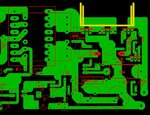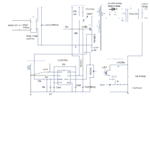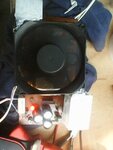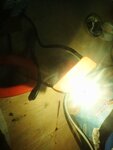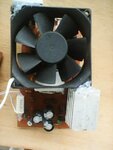codemaster11
Advanced Member level 4

i 'm facing the problem of uc3843/3842 VCC in a uc3843 based smps that show Vcc about 86vdc or even greater
when the power mosfet & ic is not in the circuit. but when i place the ic, the voltage through kick resistor drop to 6.5v. the kick resistance value is 150k/2w.
i blow up three 13n50 mosfets today because of this problem. the smps blow the mosfet in seconds. i have another circuit that works correctly and show
Vcc = 17vdc arround not greater when the mosfet & the ic is not in the circuit, with the same kick resistance, placing mosfet & ic.
Vcc drop to about 12v and the circuit works correctly. both circuits have same pcb layout but i don't know why this high voltage appear at the Vcc of ic ???
the value of kick resistor is the same as before.
when the power mosfet & ic is not in the circuit. but when i place the ic, the voltage through kick resistor drop to 6.5v. the kick resistance value is 150k/2w.
i blow up three 13n50 mosfets today because of this problem. the smps blow the mosfet in seconds. i have another circuit that works correctly and show
Vcc = 17vdc arround not greater when the mosfet & the ic is not in the circuit, with the same kick resistance, placing mosfet & ic.
Vcc drop to about 12v and the circuit works correctly. both circuits have same pcb layout but i don't know why this high voltage appear at the Vcc of ic ???
the value of kick resistor is the same as before.



